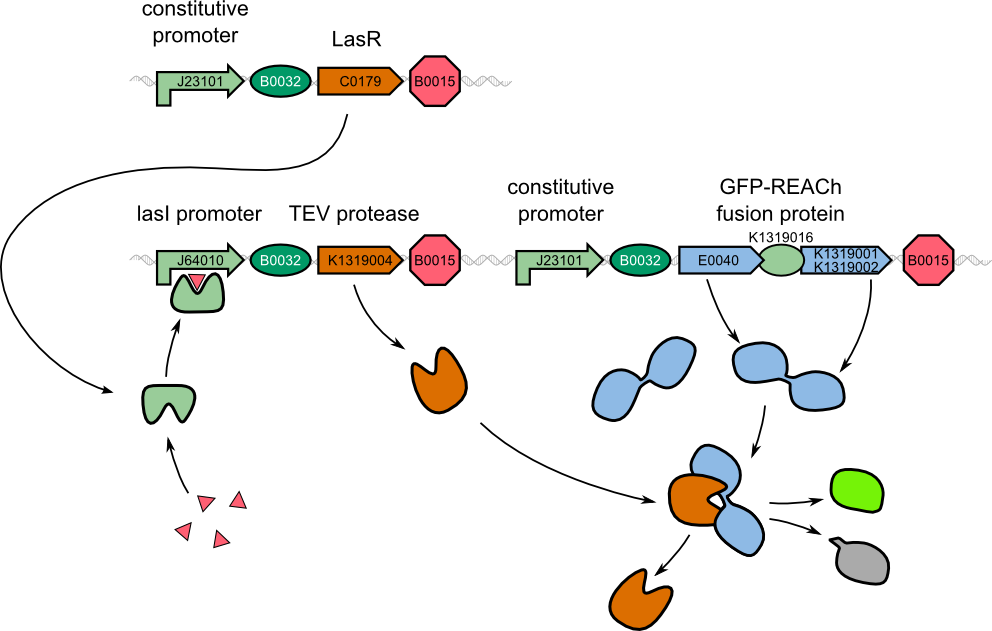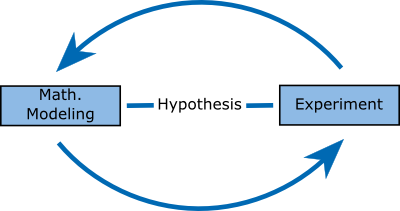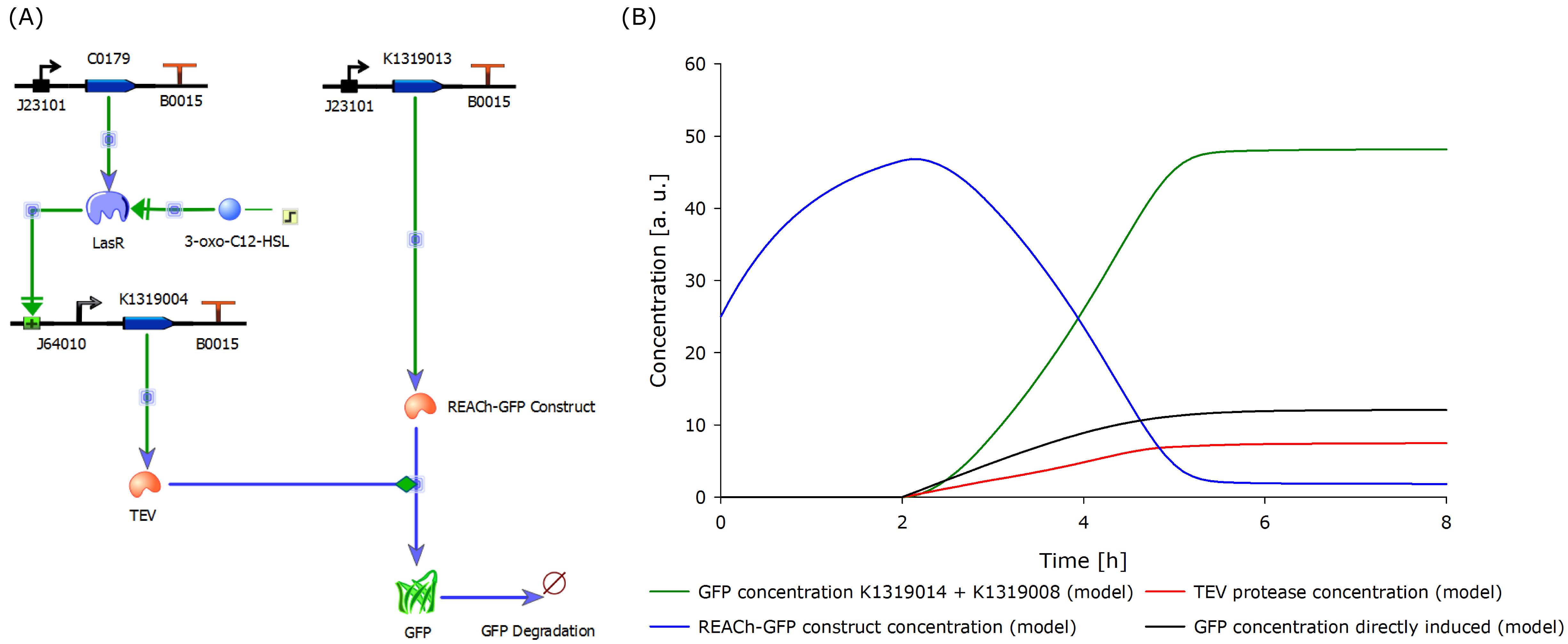Modeling
For our two-dimensional biosensor, we thought of different methods to generate a faster and stronger fluorescence response from weak promoters. In our molecular approach (left) to detect P. aeruginosa, a fusion protein of GFP and the dark quencher is cleaved by the very specific TEV protease which is introduced behind the weak quorum sensing promoter.
To validate our hypothesis, we developed a model of our molecular approach using the CAD tool TinkerCell, see figure below (Chandran, Bergmann and Sauro, 2009).
In the above figure, we compare the response time of the fluorescence signal between our theoretical system and a traditional biosensor, we included a direct expression of GFP in the same plot. In the results shown above, the strength of the promoter used for the direct GFP expression (traditional approach) is twice as high as the strength of the promoter upstream of the TEV coding sequence in our new approach. Despite a weaker promoter, a higher GFP concentration is generated in the model of the novel biosensor, predicting a quicker response time of our system.
The model predicted that our approach should be an improvement over the commonly used direct expression, so we proceeded with the clonings and assembled plasmids to test the system.
Due to the complexity of the quorum sensing circuit, we assembled an IPTG-inducible TEV protease instead of the 3-oxo-C12-HSL-inducible version.
Although the modeled and the existing double plasmid system differ regarding the induction mechanism, a high correlation was observed between the model predictions and the experimental data. However, a new model was designed according to the existing and functional IPTG-inducible system.
The model was optimized to fit the data generated from the characterization experiment conducted in shake flasks. Additionally, the data from the characterization experiment of the double plasmid construct (K1319014 + K1319008) in the chip system was included in the plot above. The data was derived from the plate reader output of the four central spots of the chip. The background from the non-induced chip was substracted from the fluorescence response to correct the data and avoid effects from cell growth leading to wrong signal strengths. The development of the fluorescence is presented here.
It is shown that the fluorescence response in chips develops later than in the characterization experiment in shake flasks. This is because the solid agar chip provides a higher diffusion barrier than liquid medium as used in the shake flasks. Further, a high oxygen transfer rate in shake flask cultivations enhances the rate of fluorescence development, as oxygen is needed for GFP production, in comparison to the cultivation in chips.
The model predictions correlate with the data generated from the characterization experiments, thus validating our molecular approach. With an iterative cycle of modeling, a faster and stronger fluorescence signal could be proven both theoretically and empirically.
|
 "
"



